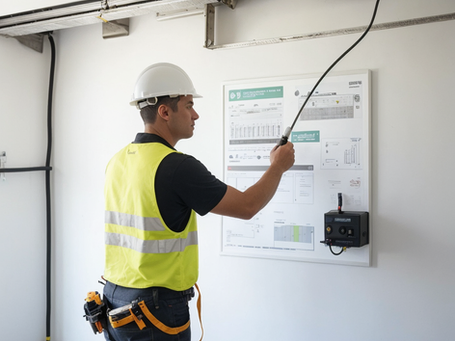In today’s age of sustainable living and energy independence, integrating solar power into our homes has become increasingly popular. With the advancement of technology, solar battery installation has emerged as a crucial component in maximizing the benefits of solar energy. Solar batteries not only store excess energy generated by solar panels but also ensure uninterrupted power supply, even during grid outages. However, installing solar batteries requires careful planning and execution to ensure optimal performance and safety. In this article, we’ll explore essential tips for solar battery installation, empowering you to harness the full potential of solar energy for your home.
Evaluate Your Energy Needs:
Before diving into solar battery installation, assess your household’s energy consumption patterns. Analyze your electricity bills to determine your average daily usage and peak demand hours. This evaluation will help you size your solar battery system appropriately to meet your energy requirements, ensuring you invest in the right capacity.
Choose the Right Battery Technology:
There are various types of solar batteries available, including lithium-ion, lead-acid, and saltwater batteries. Each technology has its pros and cons in terms of performance, lifespan, and cost. Lithium-ion batteries, for instance, are known for their high energy density and longer lifespan, making them a popular choice despite their higher initial cost. Consider consulting with a solar energy expert to select the most suitable battery technology for your specific needs.
Ensure Proper Installation:
Solar battery installation is a complex process that requires adherence to safety standards and local regulations. Hire certified professionals with experience in solar PV and battery systems to handle the installation. Proper installation not only ensures the efficiency and longevity of your solar battery but also minimizes the risk of accidents such as electrical fires or damage to your property.
Optimize Solar Panel Placement:
The efficiency of your solar battery system depends significantly on the placement and orientation of your solar panels. Ensure that your solar panels receive maximum sunlight exposure throughout the day by positioning them in areas with minimal shading and facing them towards the sun’s path. Integrating Sun-tracking technology, such as IntegrateSun, can further enhance the performance of your solar panels by automatically adjusting their angle to track the sun’s movement.
Implement Energy Management Systems:
To maximize the utilization of solar energy and optimize battery charging and discharging cycles, consider integrating energy management systems (EMS) into your solar battery setup. EMS systems monitor energy production and consumption in real-time, allowing you to make informed decisions to minimize wastage and reduce reliance on the grid.
Invest in Backup Power Solutions:
While solar batteries provide a reliable source of backup power during grid outages, it’s essential to have additional backup solutions in place for extended periods of inclement weather or system maintenance. Backup generators or grid-tied systems with backup capabilities can complement your solar battery setup, ensuring uninterrupted power supply when needed.
Regular Maintenance and Monitoring:
Like any other electrical system, solar batteries require regular maintenance to ensure optimal performance and longevity. Schedule periodic inspections and maintenance checks to identify and address any potential issues promptly. Additionally, invest in monitoring software or systems that provide real-time data on your solar battery’s performance, allowing you to detect anomalies and optimize system efficiency.
Plan for Future Expansion:
As your energy needs evolve over time, consider designing your solar battery system with scalability in mind. Opt for modular battery solutions that allow for easy expansion or integration of additional battery units as needed. Planning for future expansion ensures that your solar battery system remains adaptable to changes in your household’s energy requirements without requiring a complete overhaul.
Educate Yourself:
Knowledge is key to making informed decisions about your solar battery installation. Take the time to educate yourself about the different components of a solar battery system, maintenance requirements, and best practices for maximizing energy efficiency. Engage with reputable sources such as industry publications, online forums, and certified professionals to deepen your understanding and make the most out of your investment.
In conclusion
integrating solar battery installation into your home is a significant step towards harnessing the full potential of solar energy. By following these essential tips, such as conducting a thorough assessment of your energy needs, selecting the right battery type, and ensuring proper installation and maintenance, you can maximize the benefits of your solar power system. Not only does solar battery integration contribute to reducing your carbon footprint and reliance on conventional energy sources, but it also offers long-term financial savings and energy independence. As the world increasingly embraces sustainable energy solutions, investing in solar battery installation is not just a wise choice for your home but also a vital contribution to a cleaner, greener future. So, let the sun shine on your home, powered by the integrated energy of the sun!
